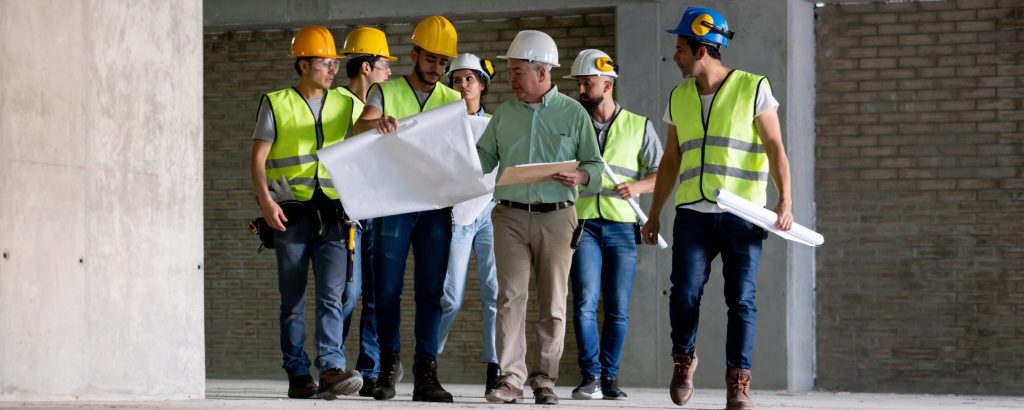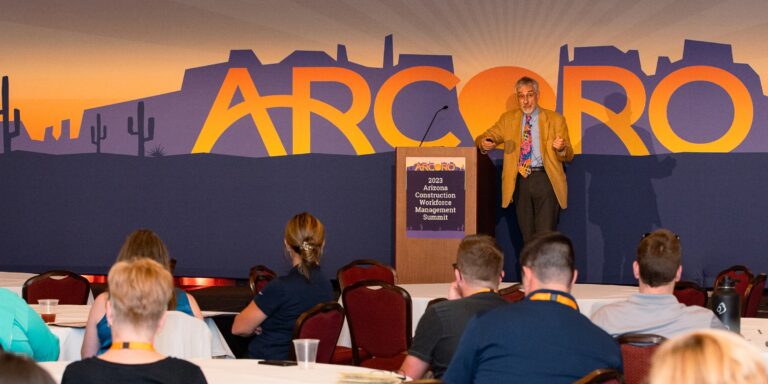In 2019, 5,333 workers died on the job. That’s about 15 deaths every day, according to the Occupational Safety and Health Administration (OSHA). Before OSHA was established in 1971, workplace safety was largely unregulated with injuries and illnesses increasing in number and severity. Since OSHA’s enforcement of safety standards, workplace fatalities have been cut by 60%. One of the ways they’ve done this is by requiring that employers provide onsite safety training.
OSHA Standard 1926.21(b)(1) states, “The employer shall instruct each employee in the recognition and avoidance of unsafe conditions and the regulations applicable to his work environment to control or eliminate any hazards or other exposure to illness or injury.”
Offering regular toolbox talks is one way employers can provide additional safety training for workers about specific job hazards and OSHA standards. And there are several construction toolbox talk topics to cover.
What is a Toolbox Talk?
A toolbox talk is an informal group discussion that focuses on a specific safety issue. As opposed to a project safety kick-off meeting or pre-construction meeting, a toolbox talk isn’t a formal meeting with a broad agenda. More for safety maintenance and specifics rather than a high-level overview, toolbox talks can be held monthly, weekly or even daily. The name “toolbox talk” refers to the idea of a crew gathering around a toolbox for a casual conversation, akin to an office water cooler talk.
What are some toolbox talk topics?
Topics of toolbox talks can be anything from basic electrical safety to ladder, forklift or fire safety. The topic can be anything relevant to your workers and/or the job at hand. For example, if a team is doing demo, it could be on how to safely remove lead paint. Or if an accident just happened, the next day’s safety meeting should address the safety issues around the accident, and how it could have been avoided. If there’s inclement weather, a toolbox talk could focus on what special precautions need to be taken.
The following are some ideal construction toolbox talk topics, especially when they are relevant to that day or week’s work on the job site.
Fall Protection/Prevention
Falls are the leading cause of death in construction. In 2020, there were 351 fatal falls to a lower level out of 1,008 construction fatalities according to OSHA. Nearly every construction site presents slip, trip and fall hazards. As for falling from heights, anyone working at even a six-foot elevation off the ground is at risk of a fatal fall.
Toolbox talks can center on slips and falls, which are the cause of many construction injuries. Or if much of the current project is being done at heights, you may want to start with a refresher on fall arrest harnesses and their proper use.
Along with slips and falls, toolbox talks on ladder and scaffold safety should also be held. One toolbox talk could break down these different types, unless only one type is relevant to your job site. Another talk could focus on a portable step ladder or portable extension ladder do’s and don’ts. Handouts with visual guides to proper ladder positioning can also be extremely useful.
Common accidents involving scaffolds go beyond just falls to encompass injury from scaffold collapse, being struck by falling tools, and electrocution due to the proximity of overhead power lines. Talk about the different types of scaffolds then move to how to safely access scaffolds or proper scaffold construction.
Personal Protective Equipment (PPE)
A safety meeting about personal protective equipment or PPE should focus on the types of PPE that are needed and required by your state at the job in question. For example, head protection is worn on almost every type of construction site, and if you see workers taking off their hard hats too often, then it’s time for a refresher on why they need them.
Hazard Communication/GHS
A toolbox talk about hazard communication might define the symbols and statements found on labels of hazardous chemicals as required by OSHA. Another talk could be around the Safety Data Sheets that OSHA now requires to accompany any potentially hazardous product to comply with GHS, and what those sheets contain. Many chemicals are hazardous at certain exposure levels, or without proper protection. A toolbox talk could cover possible respiratory protection, symptoms of overexposure, first aid for contact or exposure, and so on.
Fire Protection and Prevention
Almost 4,000 fires happen on construction sites every year, according to the National Association of State Fire Marshals. Cooking equipment and discarded cigarettes cause many construction fires, as well as hot or electrical work. The Construction Fire Safety Coalition provides resources that can serve as material for toolbox talks. You can also center a talk around fire extinguisher do’s and don’ts, fire safety exits at the job site, or preventing fires from electrical cords.
Lockout/Tagout – The control of hazardous energy
Electrical, mechanical, hydraulic and pneumatic are just a few of the energy sources that can be hazardous to workers. The unexpected release of stored energy can lead to injury or even death. A toolbox talk can help educate those in maintenance and those working near equipment about the dangers of the energy and OSHA lockout/tagout standards.
Portable Tool and Equipment Safety
Hand and power tools may not be as deadly as steam valves or large machines, but they can present a danger if mishandled. A safety talk can discuss how to mount an abrasive wheel properly on a portable hand-held grinder or the specific saw your employees use, whether that’s a portable circular saw or a hand-held jigsaw.
Basic Electrical Safety
Giving workers some perspective on the dangers of electricity by describing how it can harm them—an electrical arc flash caused by a short circuit searing the lungs when inhaled, for example—can be a powerful lesson in working safely. You can follow this up with more specific toolbox talks about electrical boxes, power lines or double-insulated tools.
Special Equipment Training
Another way to group and classify your toolbox talks is around special equipment that your project requires, and its safe usage. An example of special equipment includes the chains, slings and hooks used to connect forklifts or other lifting devices to the load they’re bearing. These can comprise a toolbox talk by themselves to go over details about quality and use. Other special equipment topics to focus on could include a cut-off saw, a forklift, working around propane tanks or even just the proper practice of mounting and dismounting heavy equipment.
Hosting a daily toolbox talk is a great way to remind even the most senior employees about the dangers of working on a jobsite. The more teams are aware of how accidents can happen, the more likely they’ll be vigilant about preventing them.
Arcoro’s Learning Management System (LMS) offers a cloud-based solution for providing training for employers. The LMS provides access to OSHA-approved courses. Managers can enroll employees in 10- or 30-hour OSHA courses for instruction on best practices to keep your workplace injury-free. Leverage our partnership with Training ABC and ClickSafety to gain access to best-in-class employee training bundles within our system.

See for yourself. Schedule a demo today.




